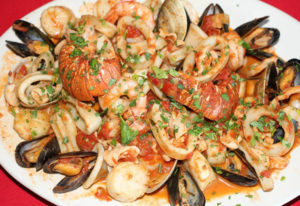As the crisp autumn air ushers in a new gardening season, it’s time to celebrate 33 years of cultivating growth with ET Week Media. Whether you’re a seasoned green thumb or just starting your home gardening journey, this October we’re thrilled to share a collection of 33 top tips to help you maximize your garden’s potential. From extending the harvest season with clever crop rotation strategies to preserving your bounty with homemade pickles and pesto, these expert suggestions will ensure your garden thrives well into the colder months. So, grab your trowel and gardening gloves, and get ready to make the most of your green space this Fall!
- “Harvest one, plant one”, such as with radishes and carrots, to keep your crops going
- Have your soil tested each spring to see if supplemental fertilizer, compost, or other enhancements are needed before planting
- Keep trees and bushes well-trimmed to ensure adequate sunlight in your garden bed
- Maximize garden space by planting early season, cool weather crops beneath trellises. They will cycle out by the time the trellised crops fill in
- Make your own compost
- Consider planting two crops of cool weather favorites: one in early spring, and a second in late summer
- Plan your garden layout in advance of planting, taking into account mature height and spread of each crop
- Start crops from seed indoors to get a jump start on planting once the weather warms
- Cure sweet potatoes immediately after harvest so they last longer
- Fertilize regularly throughout the growing season
- Pull all crops prior to first frost to ensure no crop loss
- Dry peppers in the oven or a dehydrator to preserve them for use in sauces, chili, or as home decor
- Make your own infused spirits, such as cucumber or jalapeno vodka
- Stay on top of weeds so your crops don’t have to compete for water, sunlight, and nutrients
- Be gentle when harvesting root crops, such as sweet potatoes. Sweet potato skin is fragile straight from the ground, so hand-digging is best
- Have a plan for when early-season crops rotate out to maximize use of your garden space: replace spinach and broccoli with cucumbers and peppers, for example
- Make your own pickles
- For small garden spaces, consider “pot friendly” varieties of cucumber, sweet potatoes, tomatoes and other favorites
- Treat early and often for garden pests
- Water in the morning, when it’s cooler and less water will be lost to evaporation
- Use a soaker hose to direct water to plant roots and reduce the chance of fungus or mold growth
- Harden off seedlings and young plants that were started in your home or a greenhouse to reduce the chance of transplant shock
- Consider using organic gardening products like pulverized oyster shells and manure to protect pollinators and beneficial bacteria, worms, and other soil inhabitants
- Use netting and fencing to humanely keep out birds, rabbits, deer and more
- Make and freeze pesto, hot sauces, and cut up peppers and green onions for use over the winter
- Rotate crops each year, no matter how small your gardening space
- Trellis vine crops such cucumbers, sweet potatoes, and luffa to save space, deter pests, and making harvesting easier
- If there’s an unexpected late frost after you’ve planted early spring crops, cover the plants overnight with newspaper or dark-colored contractor bags. Be careful to not cover wet plants
- Clip and hang herbs to dry, then store in airtight containers for use all year long
- Use grow pots for root crops to retain heat and so you can harvest as-needed, rather than pulling the whole plant at once
- Try companion planting to reduce pests, increase pollination, and slow weed growth
- Ensure a proper amount of water for your garden. Not too much, not too little
- Create a perennial herb garden by bringing in plants over the winter, then returning back outside in the spring












 20 lucky winners will win $500 each in prizes totaling $10,000.
20 lucky winners will win $500 each in prizes totaling $10,000. 